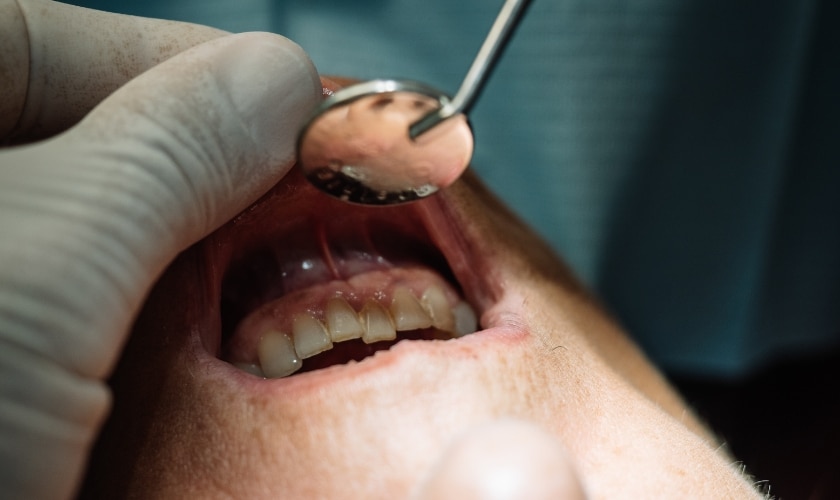
Scaling and root planing are important dental procedures, especially for smokers dealing with gum disease. Smoking significantly affects oral health by increasing plaque buildup and weakening the immune system, which makes managing gum disease more challenging. Scaling involves thoroughly cleaning the teeth to clean the tooth surfaces of plaque and tartar and below the gum line. Root scaling smooths the root surfaces, which helps the gums reattach and reduces the risk of future plaque accumulation.
For smokers, these treatments are particularly crucial as they combat the heightened risk of severe periodontal issues. This blog explores why these two processes are vital for smokers, how the procedures work, and the benefits they offer in maintaining optimal oral health despite the challenges smoking presents.
What Is Scaling and Root Planing?
These are advanced cleaning techniques used to manage and treat gum disease. Unlike regular cleanings, which focus on the visible surfaces of the teeth, these procedures target deeper areas to address underlying issues.
- Scaling: The surfaces of the teeth as well as the area under the gum line must be cleared of plaque and tartar. If gum disease is not treated on a regular basis, plaque—a soft, sticky layer of bacteria—can develop on teeth. Calculus, or tartar, is a hardened form of plaque that requires a dental practitioner to remove. In order to lessen oral bacteria and stop more gum inflammation, scaling is essential.
- Root Planing: This process smooths out the rough areas on the roots of the teeth. This procedure helps remove bacteria and toxins from the root surfaces and encourages the gums to reattach to the teeth. By creating a smoother surface, this method makes it more difficult for plaque to accumulate, which is essential for treating and preventing periodontal disease.
Why Smokers Need These Two Processes?
Smokers are at greater risk of severe gum disease due to several factors related to tobacco use. The need is further amplified for those who smoke:
- Increased Plaque and Tartar Buildup: Smoking contributes to a greater accumulation of plaque and tartar on the teeth. This increased buildup can exacerbate gum disease, making regular scaling and these procedures necessary to manage oral health.
- Weakened Immune Response: Tobacco use weakens the immune system, reducing the body’s ability to fight off infections, including those affecting the gums. This makes smokers more susceptible to severe periodontal issues, requiring more intensive treatments.
- Impaired Healing: Smokers often experience slower healing times after dental procedures. These processes help to lessen inflammation and improve gum health, but smoking cessation is crucial for optimal healing and long-term success.
More on the Procedures
Understanding what to expect from these extensive methods can help you prepare and reduce anxiety about the treatment. Here’s a step-by-step overview:
- Initial Assessment: The procedure begins with a thorough examination by your dentist or dental hygienist. They will review the condition of your gums and teeth, often using X-rays to evaluate the extent of gum disease and any bone loss.
- Scaling: During scaling, the hygienist or dentist utilizes specialized tools to scrape tartar and plaque off the teeth and below the gum line. This may involve manual hand tools or ultrasonic devices. The goal is to clean all surfaces and remove as much buildup as possible.
- Root Planing: Following scaling, the process of periodontal cleaning involves smoothing the root surfaces of the teeth. This step helps eliminate rough areas where bacteria can accumulate and promotes the reattachment of the gums to the teeth. Smoothing the roots also helps reduce the likelihood of future plaque buildup.
- Post-Procedure Care: After the procedure, you may experience some discomfort and sensitivity, especially in the days immediately following. Your dentist will provide particular care instructions, including recommendations for managing pain, maintaining oral hygiene, and avoiding certain foods and drinks.
What are the Benefits for Smokers?
For smokers, these two types of care treatments offer several key benefits:
- Reduction in Gum Inflammation: These processes help reduce inflammation and bleeding in the gums, common symptoms of gum disease. By removing plaque and tartar, these treatments help improve overall gum health.
- Prevention of Further Gum Disease: Regularly doing these dental procedures can prevent the progression of gum disease, reducing the risk of more serious complications such as tooth loss and bone damage.
- Improvement in Oral Health: These procedures help maintain good oral health by addressing the root causes of gum disease. By keeping plaque and tartar levels under control, these processes contribute to a healthier mouth and fresher breath.
Aftercare and Maintenance
Proper aftercare is a vital step for achieving the best results. Here’s what you can do to maintain your oral health after the procedure:
- Attend Follow-Up Appointments: Seeing your dentist on a regular basis is essential for tracking your development and making sure these procedures have been successful. Your dentist will monitor the condition of your gums and advise you if further care is required.
- Maintain Good Oral Hygiene: Brush and floss your teeth regularly to keep your mouth healthy. To prevent irritating your gums, use fluoride toothpaste and a toothbrush with soft bristles. Using an antibacterial mouthwash as a rinse can also aid in bacterial control and gum health promotion.
- Avoid Smoking: Quitting smoking is one of the most beneficial steps you can take for your oral health. Smoking cessation helps reduce plaque buildup, improves gum healing, and lowers the risk of developing severe gum disease.
- Follow Dietary Recommendations: Eating a balanced diet rich in vitamins and minerals supports overall oral health. Foods high in vitamin C can help strengthen gum tissue and support healing.
These are essential techniques for managing and treating gum disease, especially for smokers who face increased risks due to tobacco use. These treatments help remove plaque and tartar, reduce inflammation, and promote healthier gums. By maintaining good oral hygiene, attending regular dental visits, and quitting smoking, you can enhance the effectiveness of dental procedures and achieve better oral health. If you are a smoker dealing with gum issues, consider discussing these two important processes with your dentist Toms River, NJ to address your specific needs and improve your oral health.
Frequently Asked Questions
A. Smokers may need scaling and root planing more frequently than non-smokers. It’s generally recommended every 3-6 months, depending on the severity of gum disease and individual oral health. Regular treatments help manage plaque buildup and prevent further complications.
A. Yes, scaling and root planing can help reduce bad breath by removing plaque and tartar that contribute to oral odor. However, the most effective solution is quitting smoking. Scaling and root planing should be combined with good oral hygiene for the best results.
A. Common side effects include temporary discomfort, sensitivity, and mild bleeding. These symptoms usually subside within a few days. If you experience severe pain or prolonged issues, contact your dentist for further evaluation and care.







